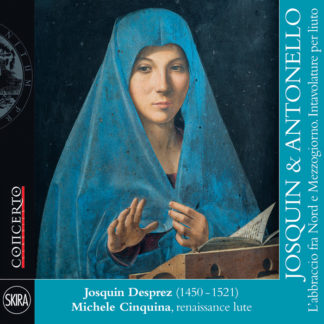Johann (H. A.) Hoffmann (1770 – 1842)
Divertimento a Mandolin Violin and Bass (No. 3) *
1. Allegro mod.to
2. Andante
3. Allegro Molto
Divertimento a Mandolin Violin and Bass (no. 4) *
4. Un poco Adagio
5. Menuet, Trio
6. Allegro Molto (Rondeau)
Giovanni Francesco Giuliani (1760 – 1818)
Quartet for Mandolin Violin and Cello or Viola and Lute (No. 2) **
7. Moderato
8. Rondo
Quartet for Mandolin Violin and Cello or Viola and Lute (No. 4) **
9. Moderato
10.Minuè Grazioso, Trio
Quartet for Mandolin Violin and Cello or Viola and Lute (No. 6) **
11. Amoroso
12. Allegro Spiritoso
* pieces performed with violin, Lombard mandolin, cello, theorbo
performing instruments: violin, Lombard mandolin, cello, theorbo
** songs performed with violin, Neapolitan mandolin, cello, theorbo
performing instruments: violin, Neapolitan mandolin, cello, theorbo
DIVERTIMENTI DI HOFFMANN
John Hoffmann, sometimes called Johann by German historians, belongs to the last decades of the 18th century. He was apparently one of the greatest virtuosos of the mandolin. Nothing is known about Giovanni Hoffmann’s life outside the Viennese milieu; the name suggests that he he was Austrian or German although it was common to italianize the name by musicians foreigners. A family named Hoffmann was particularly active in music in the century of Enlightenment in Bohemia; without more information it is impossible to link John Hoffmann to that family strain.
The Divertimenti a Mandolin, Violin and Bass by si.re Giov: Hoffmann were found by the Baschenis Ensemble also at Gesellschaft der Musikfreunde in Vienna and edited in own directly from the microfilm. Divertimenti Nos. 3 and 4 are performed in this recording.
An expressive peculiarity is that the composer, with a view to making the mandolin, mutes the violin and cello by prescribing it in the score.
QUARTETTI DI GIULIANI
Giovanni Francesco Giuliani (Livorno, ca. 1760 – Florence, after 1818), violinist, harpist, teacher of singing and harpsichord, was a pupil of violinist Pietro Nardini (1722-1793) and of Bartolomeo Felici (1695-1776) for counterpoint. He composed largely instrumental music, but without neglecting opera and ballet.
During his career he never moved from Florence: he played as first violin at the Teatro Nuovo, from 1783 to 1798 he conducted the orchestra of the Teatro degli Intrepidi and at the Accademia delle Belle Arti (where he had among his students the composer Ferdinando Giorgetti) he taught courses in singing and declamation. Giuliani was one of the few Italian authors of the late 1700s who did not need to make constant travels and journeys to spread his music; he certainly had to have good contacts since he published some of his works in the most important cities for the publishing European music publishing (London, Paris, Amsterdam).
The manuscripts of the Quartets were procured by Ensemble Baschenis directly from Gesellschaft der Musikfreunde in Vienna and edited in-house directly from microfilm.
The even-numbered Quartets, namely 2, 4, 6, are performed in this recording.





